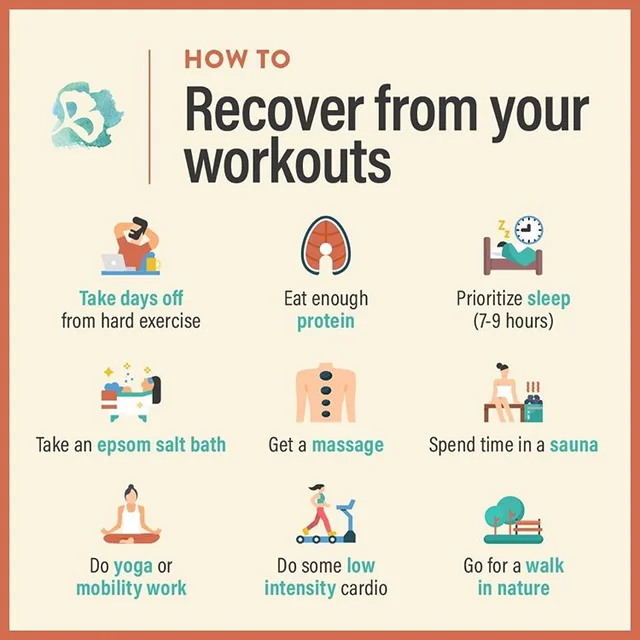
What Exactly Is Active Recovery?
The Essential Role of Active Recovery in Your Fitness Regimen
Introduction
After a grueling workout, the thought of moving again can feel like the last thing you want to do. However, that’s exactly what your body craves. Welcome to the world of active recovery! This isn’t just some new fitness trend; it’s a vital part of your training that helps with muscle repair, boosts your health, and keeps you injury-free. In this post, we’ll dive into what active recovery really is, why it’s so crucial, and how you can seamlessly fit it into your routine. Let’s discover how gentle movements can truly impact your fitness journey.
Understanding Active Recovery: What It Is and Why It Matters
What Exactly Is Active Recovery?
Active recovery means engaging in light exercise after your harder workout sessions. Unlike passive recovery, where you simply kick back and rest, active recovery keeps your body moving without adding extra strain. Think of activities like a casual walk, a slow swim, a gentle yoga session, or an easy bike ride. The goal here is to keep that blood flowing, which helps repair muscles and ease soreness.
Why It’s Good for You
One of the best things about active recovery is how it benefits your body. Gentle movements can improve blood circulation, flush out metabolic waste, and help reduce muscle stiffness and soreness. This is so important after intense workouts; ignoring recovery can leave you feeling sore longer and might mess with your next workout.
Here’s Some Research to Back It Up
According to the American Council on Exercise, people who stick to active recovery can maintain their performance better than those who opt for total rest. Staying in motion also helps you keep up your fitness levels while you recover.
Striking the Right Balance Between Recovery and Training
Don’t Forget Those Rest Days
While active recovery definitely has its perks, balance is key. Full rest days are just as crucial because they give your body time to fully recover. How many rest days you need will depend on your fitness level, workout intensity, and how fatigued you feel. If you ignore rest and keep pushing, you might wind up overtraining, which can hurt your performance.
Making a Recovery Plan that Works for You
If you’re serious about your fitness journey, team up with a personal trainer who can help you create active recovery strategies tailored just for you. This way, you address your unique needs and reduce the chances of overdoing it or not recovering enough. A customized plan helps you recover well while still challenging yourself.
Let’s Get Practical: Active Recovery Workouts You Can Try
Now that we know why active recovery matters, let’s go over some easy workouts you can add to your routine.
Enjoying the Outdoors: Light Walking or Jogging
A gentle stroll or light jog is a fantastic way to incorporate active recovery into your days. Keep a pace that lets you chat comfortably—that’s the sweet spot for recovery days.
Low-Intensity Cycling or Swimming
Consider hopping on a bike or taking a leisurely swim at a slow pace. Both of these activities engage your muscles without putting them under stress, making them perfect after those tough workout days.
Mindful Movements: Yoga and Tai Chi
Restorative yoga and Tai Chi involve gentle movements and focused breathing, which can calm your mind while also benefiting your body. These practices support muscle recovery, improve flexibility, and enhance balance.
The Long-Term Perks of Active Recovery
Incorporating active recovery doesn’t just help you bounce back quicker; it sets you up for long-term success in your fitness journey. Regular active recovery sessions can foster lasting exercise habits, making it easier to stay fit over the years. Plus, studies suggest that those who engage in active recovery are less likely to get injured. By taking a proactive approach, you can dodge some of the common setbacks that many face in fitness.
How to Bring This All Together
Ready to weave active recovery into your routine? Here’s how to get started:
1. Plan Your Active Recovery Days: Mark your calendar for light activities like walking or yoga on days after tough workouts.
2. Tune into Your Body: Pay attention to how you feel during your active recovery. If something doesn’t feel right, dial it back and try a different activity.
3. Hydration is Key: Recovery isn’t just about what you do; it’s also about staying hydrated. Drink enough water to help your muscles mend.
4. Experiment and Find What Fits: Test different active recovery methods to see what feels best for you. It may take time, but finding what works will help your performance shine.
5. Blend in Mindfulness: Don’t forget about the mental side of things. Try integrating activities like yoga to relax your mind while also helping your body recover.
Conclusion
Active recovery is a cornerstone of a balanced fitness routine. It ensures you recover effectively and sets you up for success in the long run. By mixing gentle movements into your schedule and prioritizing both active and passive recovery, you’re paving the way for lasting health benefits.
We hope this post sheds light on the importance of active recovery. Have you tried incorporating it into your routine? We’d love to hear your stories and experiences in the comments. Remember, sometimes it’s the gentle movements that lead to the biggest changes in your fitness journey!
Hashtags: #recovery #active #fitness #what #days #body #into #gentle #movements #rest #after #workout #just #routine #light
